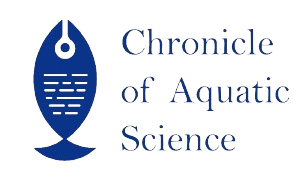| File | Action |
|---|---|
| Hydrogen Sulphide effect in Shrimp Culture | Download |
- 919088951040 call us
- chronicleofaquaticscience@gmail.com Mail us
Hydrogen Sulphide effect in Shrimp Culture
Popular Article
Manuscript ID: CoAS_SP1_12
Hydrogen Sulphide effect in Shrimp Culture
Saikat Kumar Maji*
Abstract
The world's largest aquaculture industry is in India. The economy also benefits greatly from the shrimp industry. A major threat to Indian aquaculture industry is the loss of survival because of various types of diseases due to improper pond environment management and also groundwater being impacted by human and natural activities, which has also reduced productivity. Production could be facilitated by the utilization of the water reserve. Recently some of the problems in shrimp culture like Hydrogen Sulphide problem causes heavy mortality during running culture.
Keywords
Shrimp; Vannamei; Hydrogen Sulphide; Toxic effect; Silent killer
References
Barman D., et al. “Immunostimulants for aquaculture health management”. Journal of Marine Science: Research and Development 3.3 (2013): 1-11.
CIBA. “Annual Report 2017-18. Central Institute of Brackish water Aquaculture, Chennai, Tamil Nadu, India. Publication, ISSN 0976-5536 (2018): 250.
Boyd CE. “Standardize terminology for low-salinity shrimp culture”. Global Aquaculture Advocate 5.5 (2002): 58-59.
CIBA. “Annual Report 2017-18. Central Institute of Brackish water Aquaculture, Chennai, Tamil Nadu, India. Publication, ISSN 0976-5536 (2018): 250.
Boyd CE. “Standardize terminology for low-salinity shrimp culture”. Global Aquaculture Advocate 5.5 (2002): 58-59.
Available Online
30th March, 2024
Google Scholar Link
How to Cite the Article
Maji S K. Hydrogen Sulphide effect in Shrimp Culture. Chron Aquat Sci. 2024;1(10):130-133
Copyright
This is an open-access article distributed under the terms of the Creative Commons Attribution License (CC BY). The use, distribution or reproduction in other forums is permitted, provided the original author(s) and the copyright owner(s) are credited and that the original publication in this journal is cited, in accordance with accepted academic practice. No use, distribution or reproduction is permitted which does not comply with these terms.

Hydrogen Sulphide effect in Shrimp Culture


